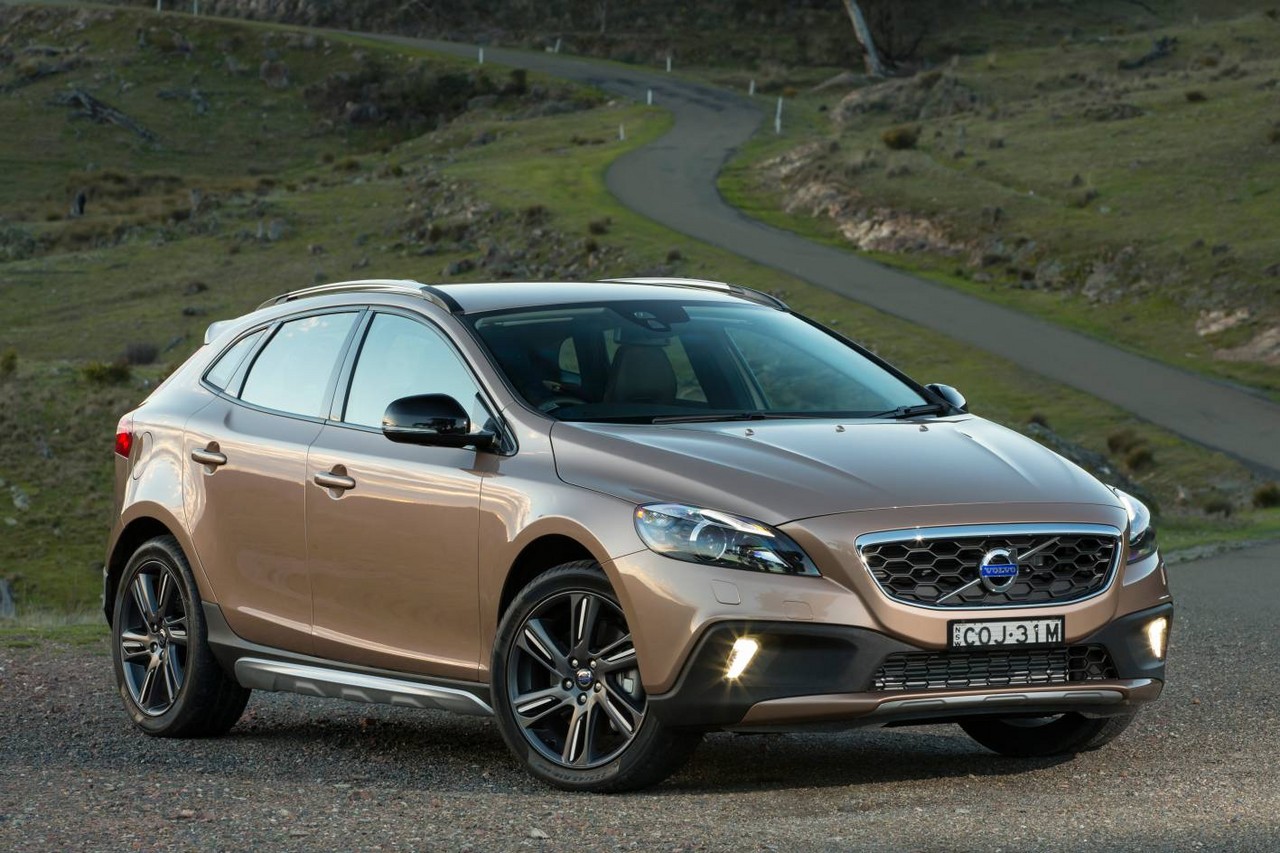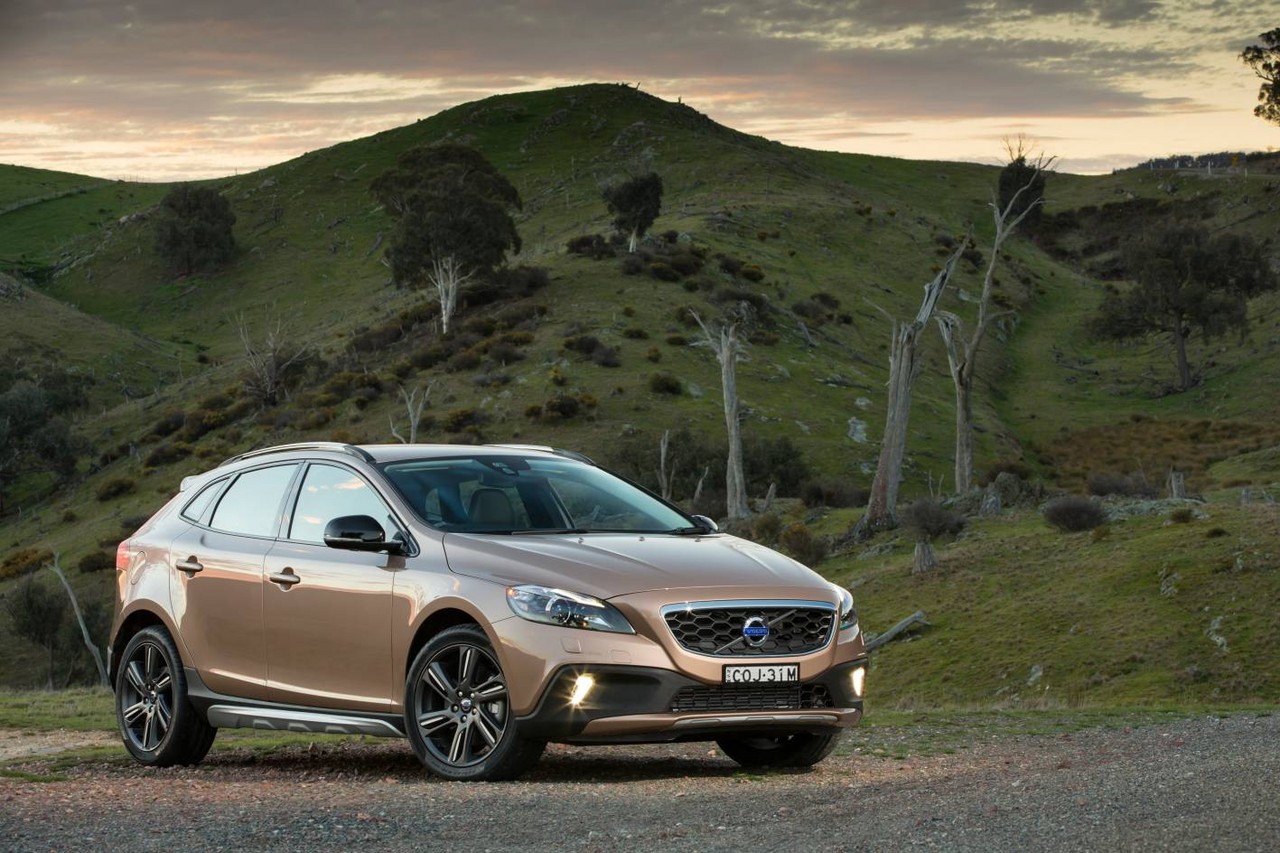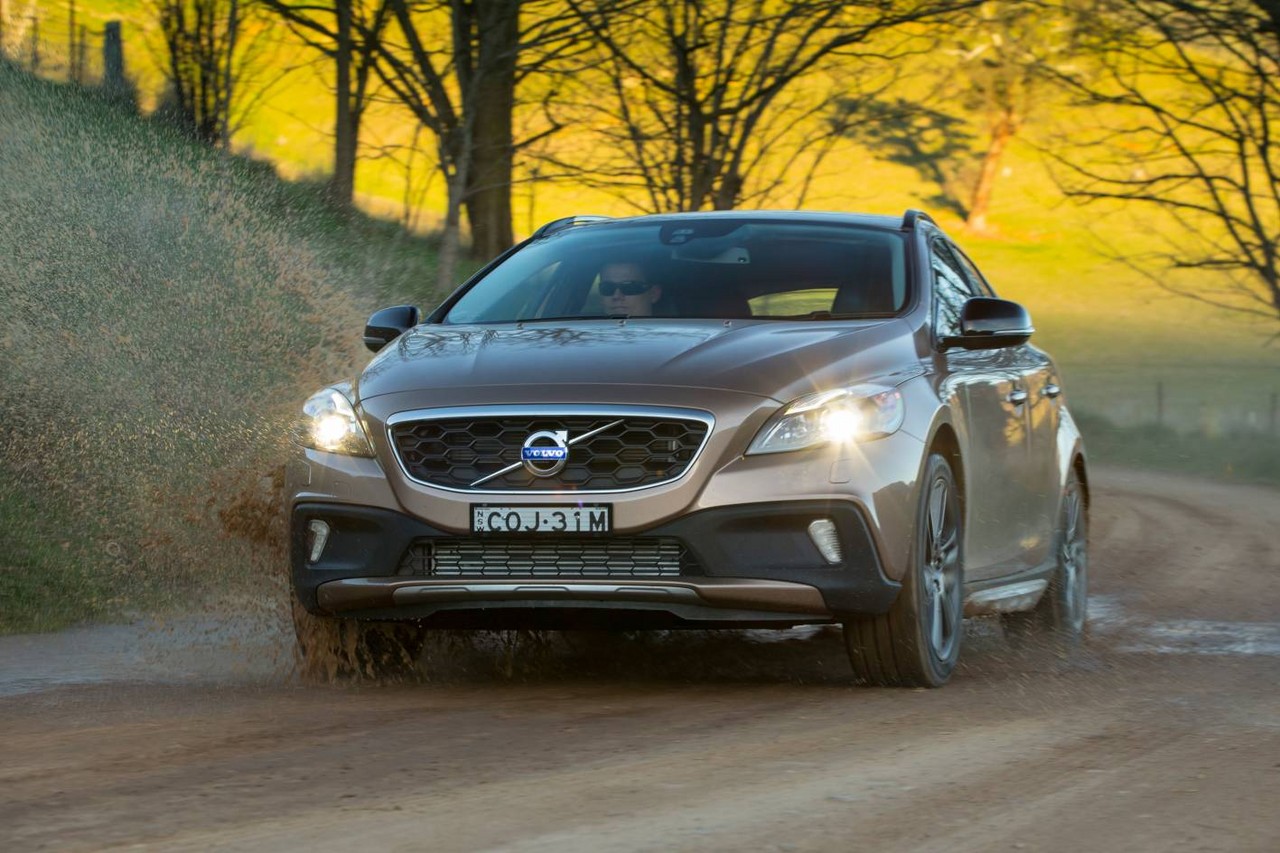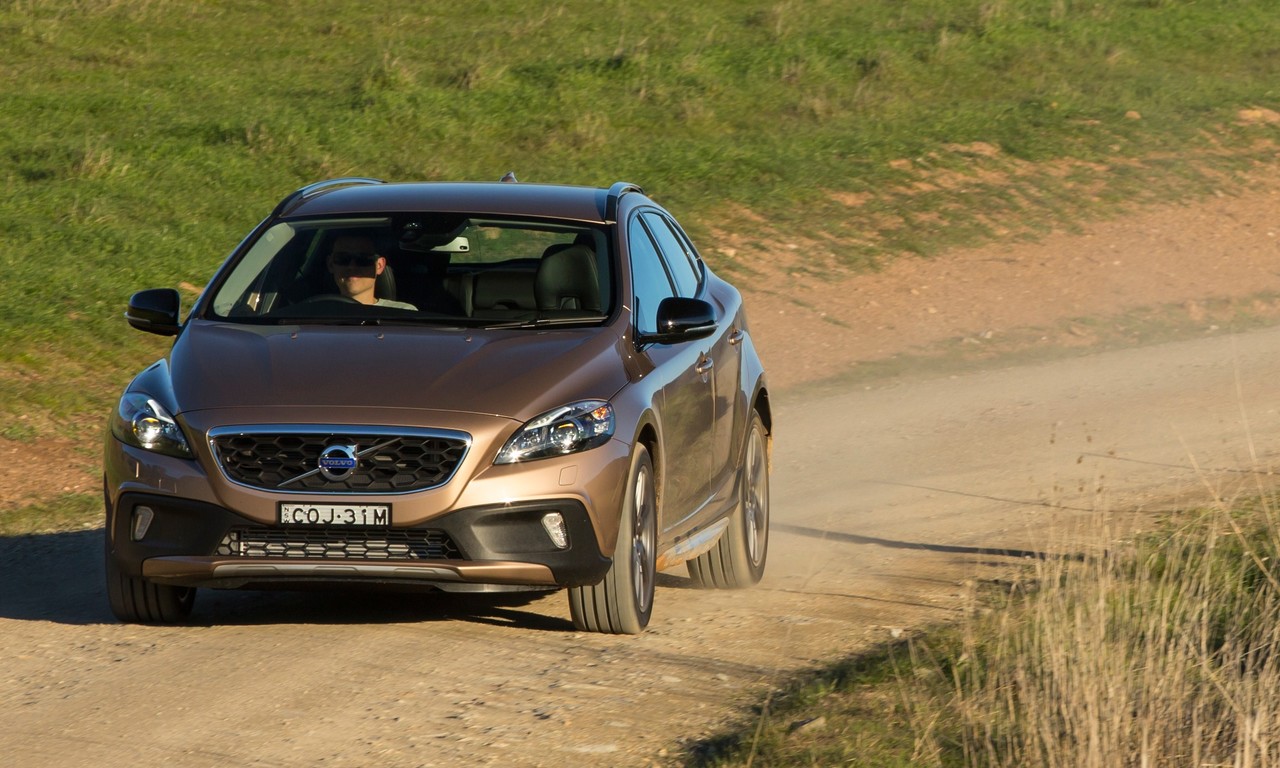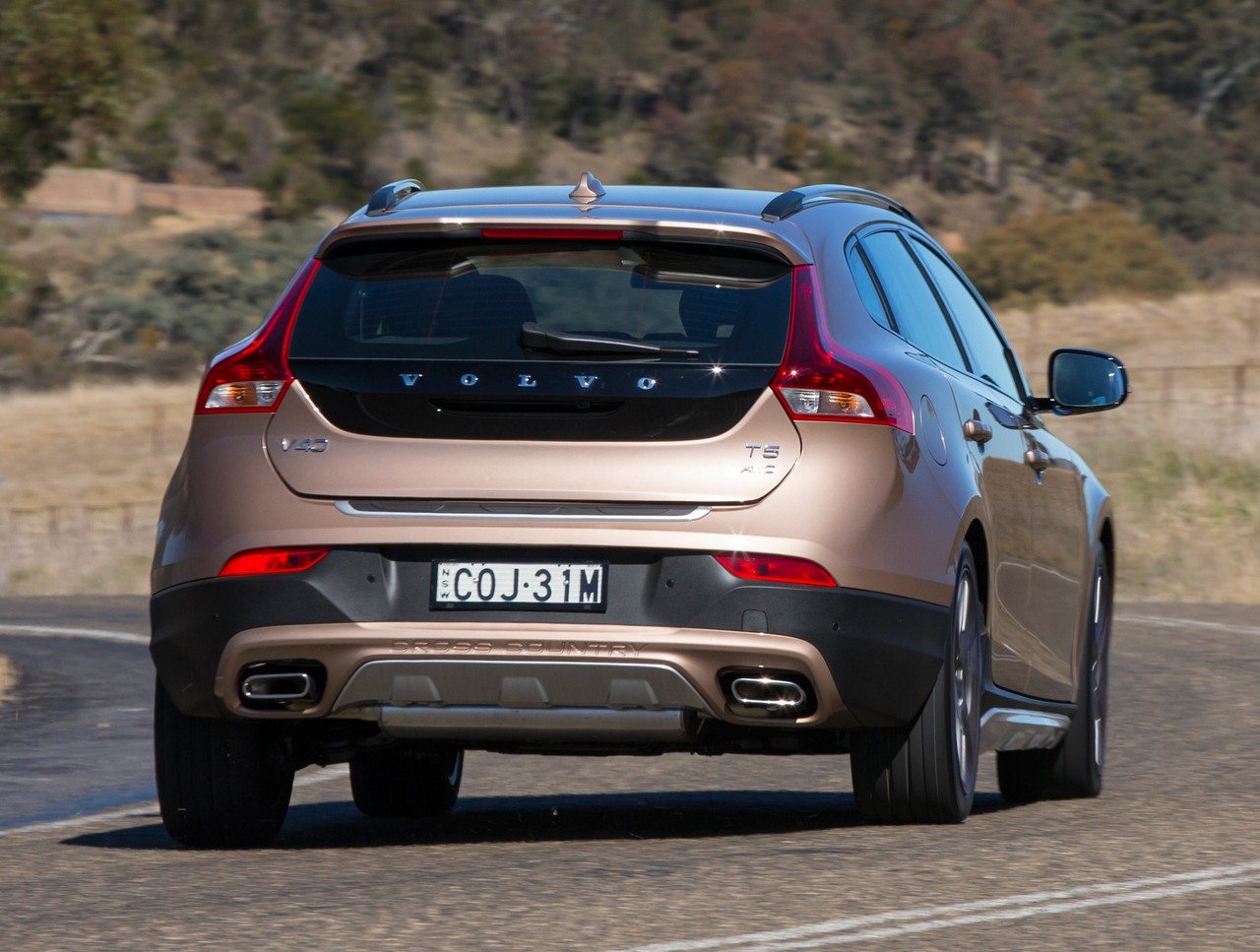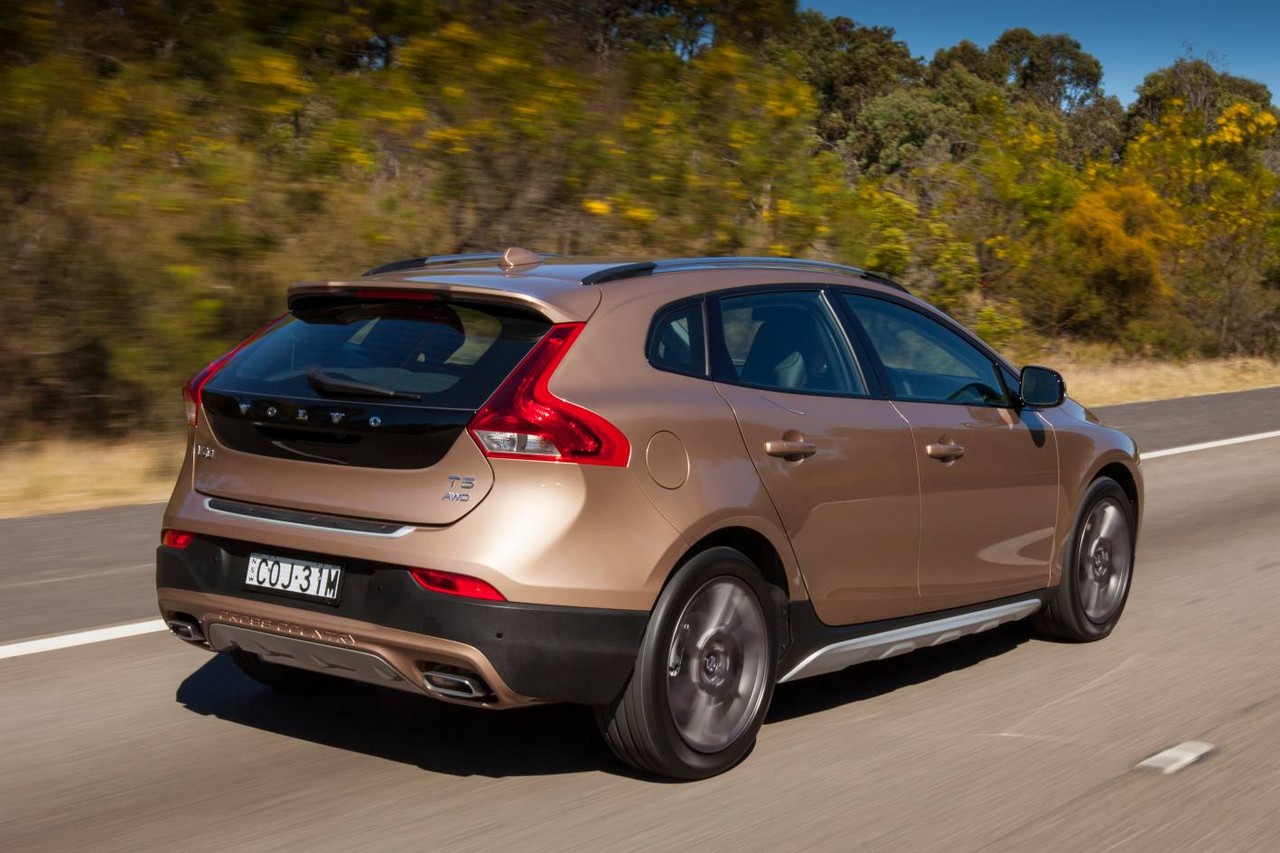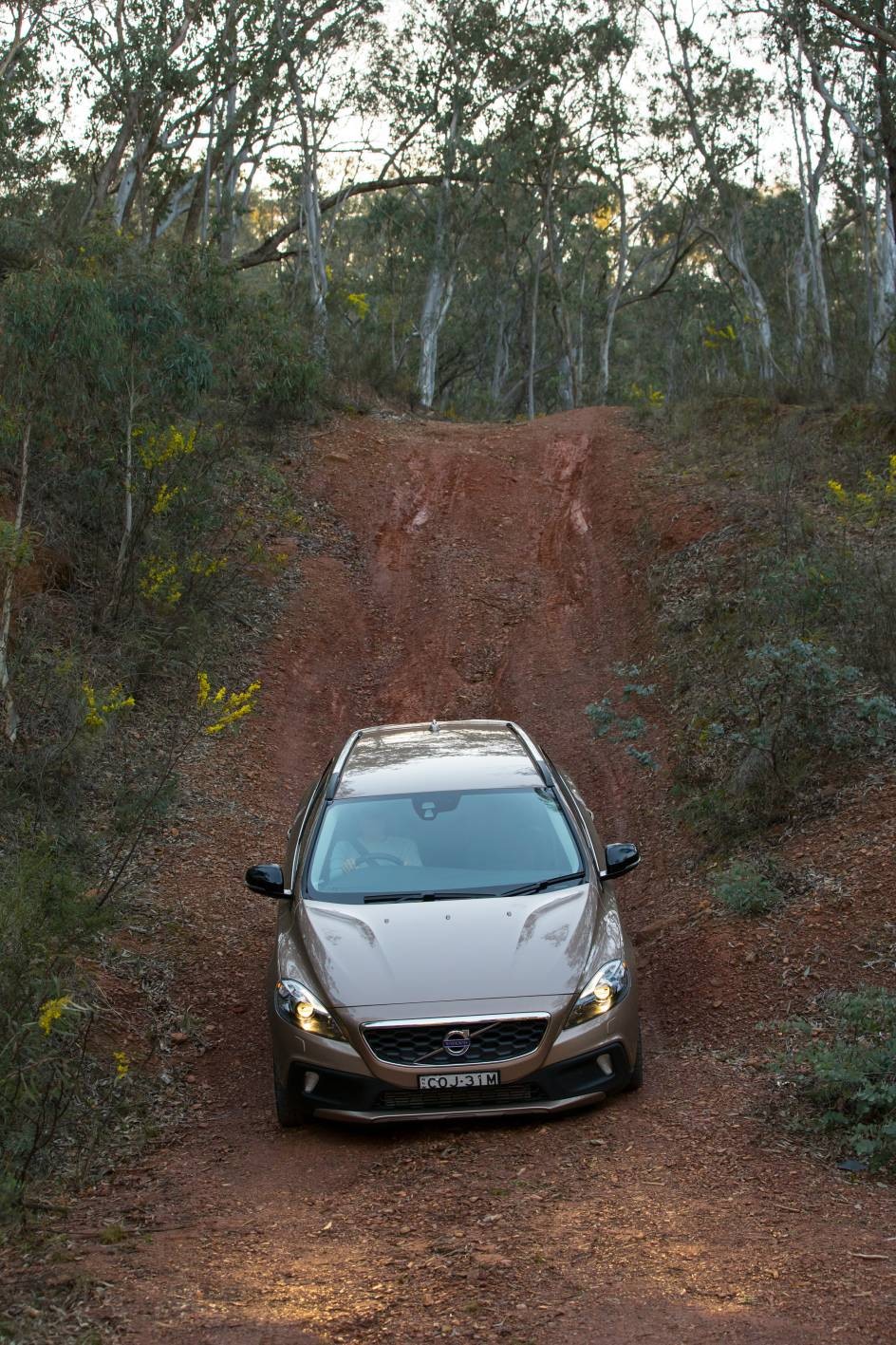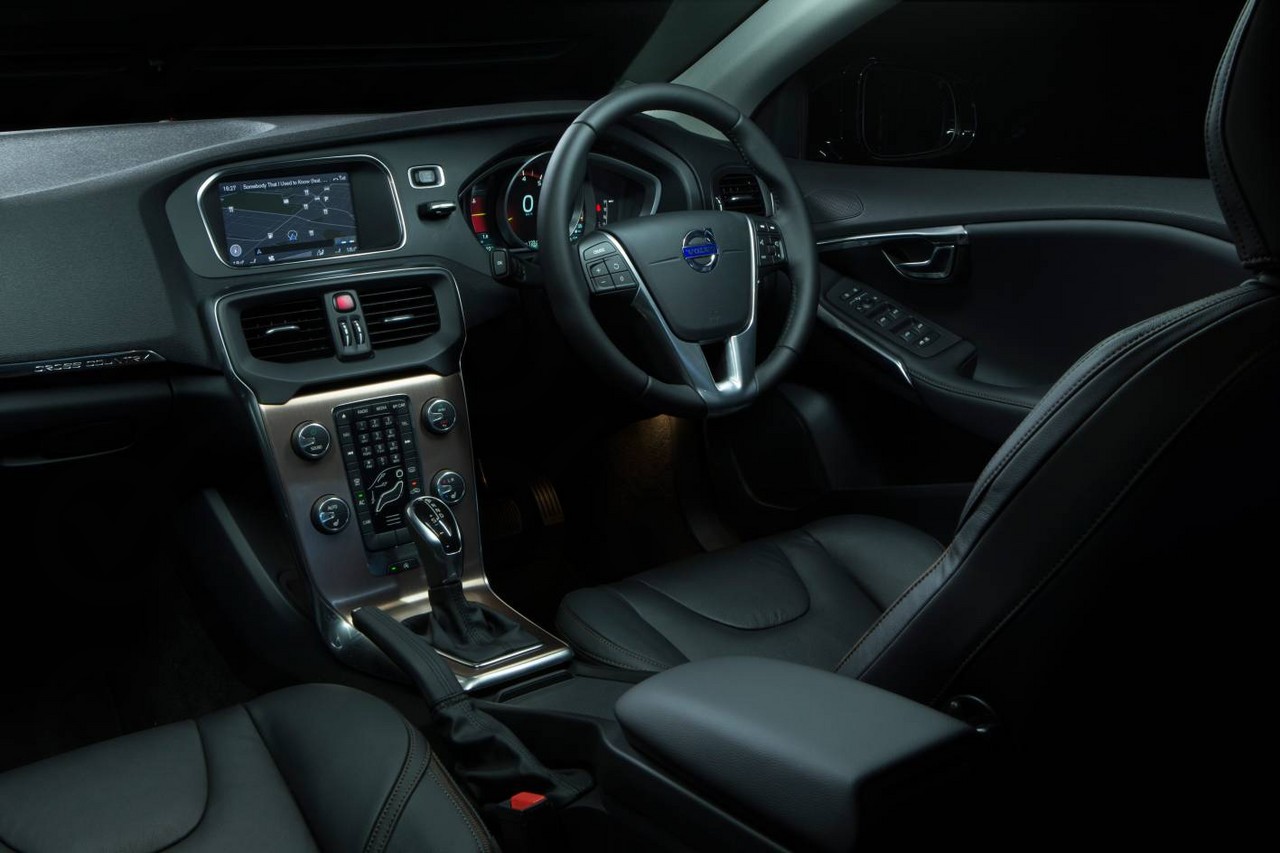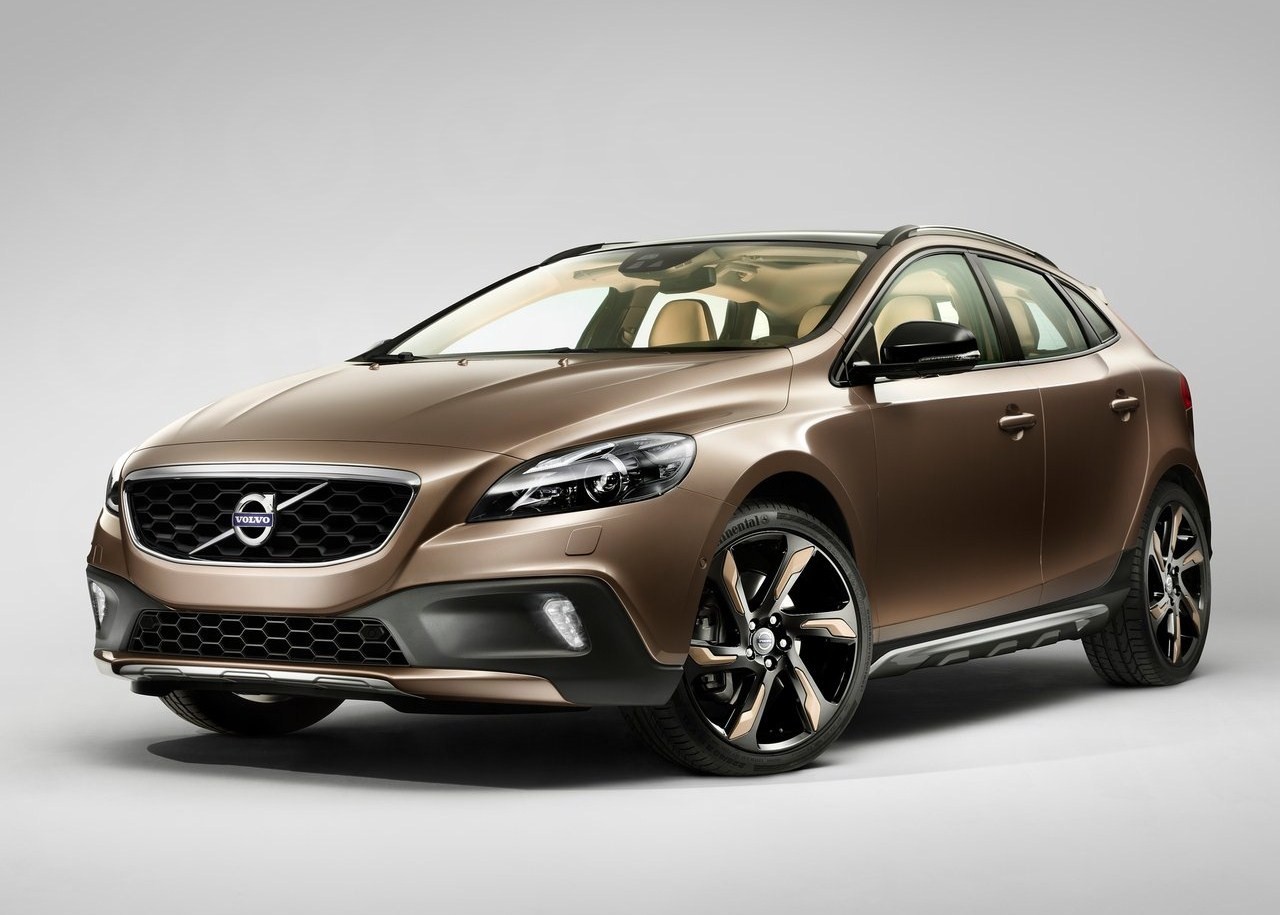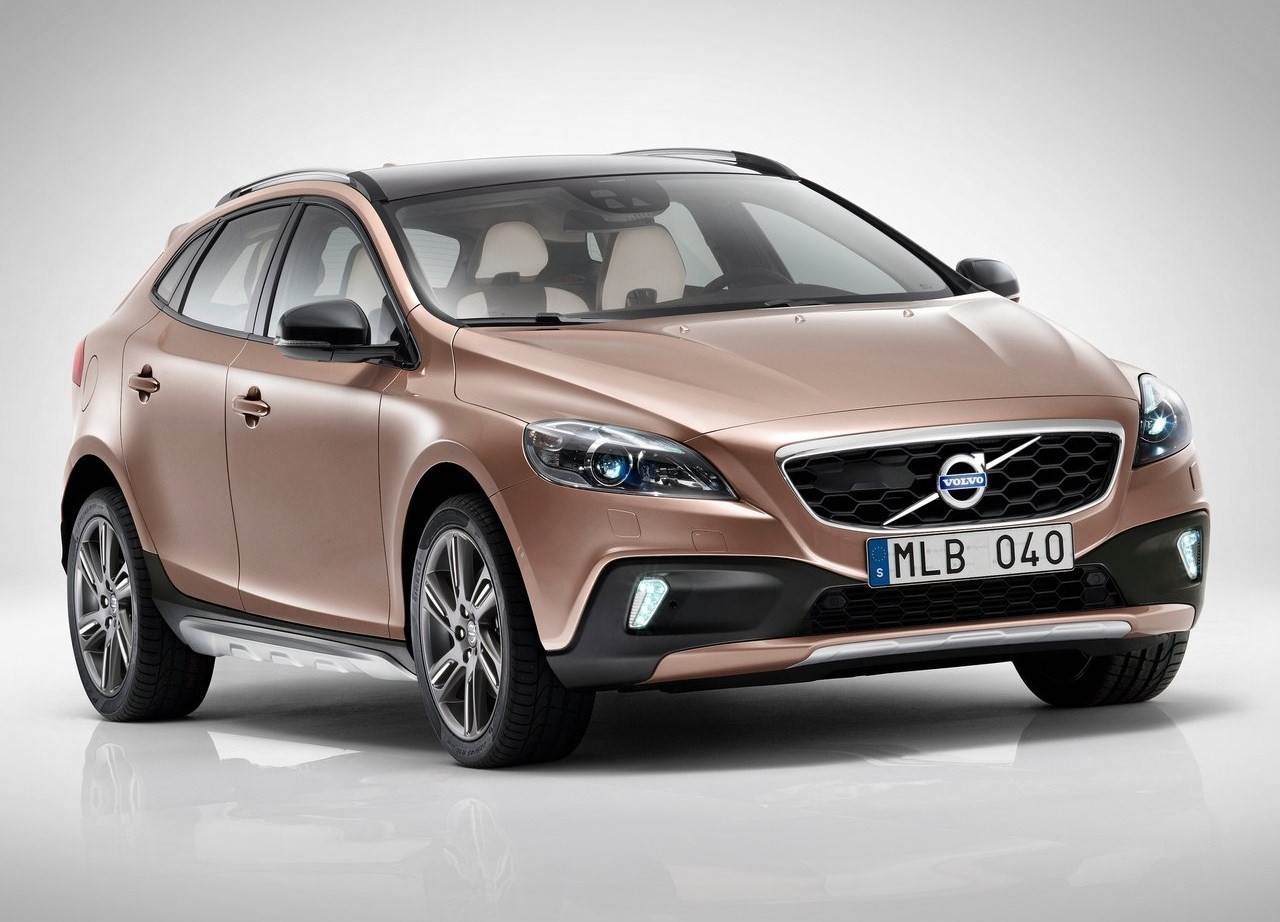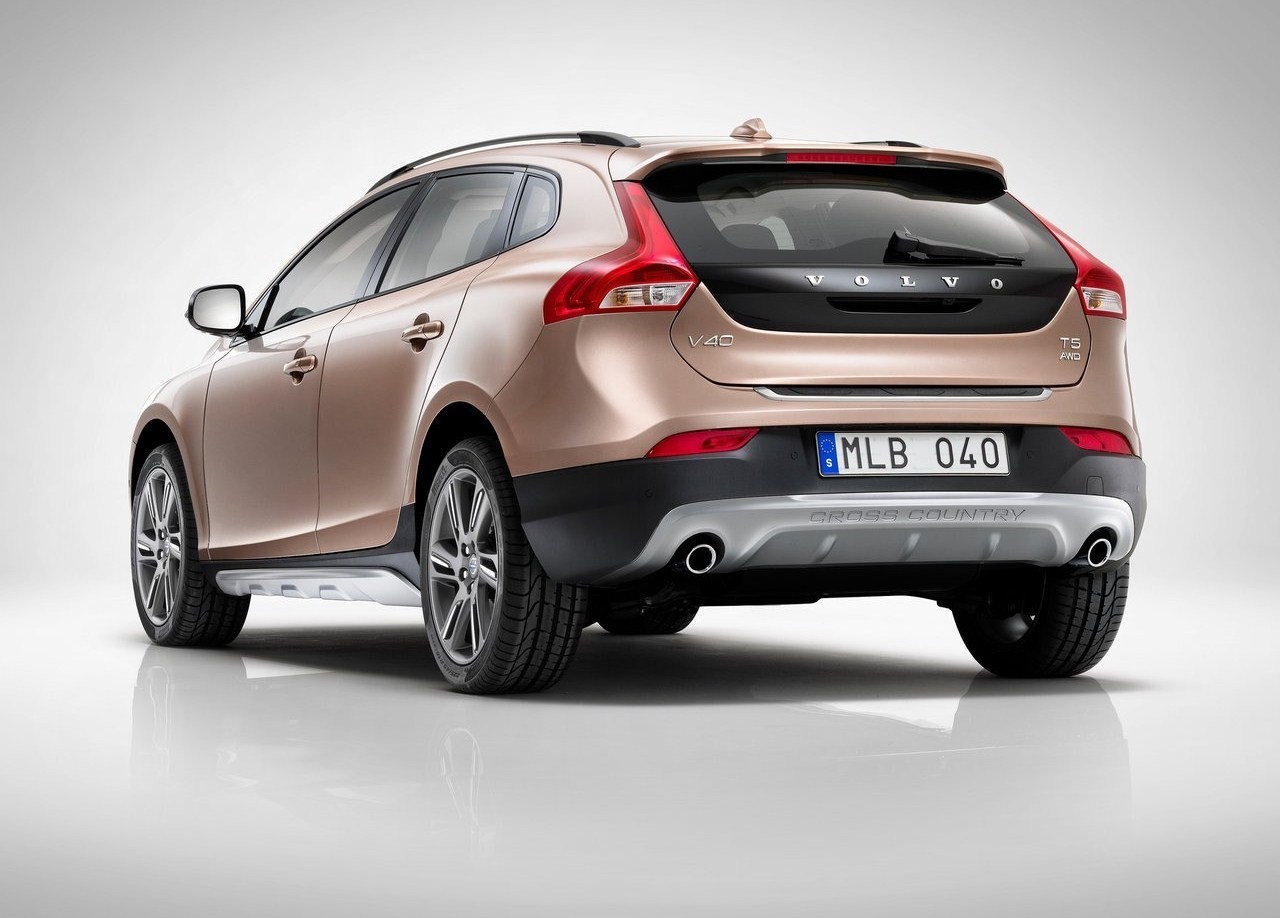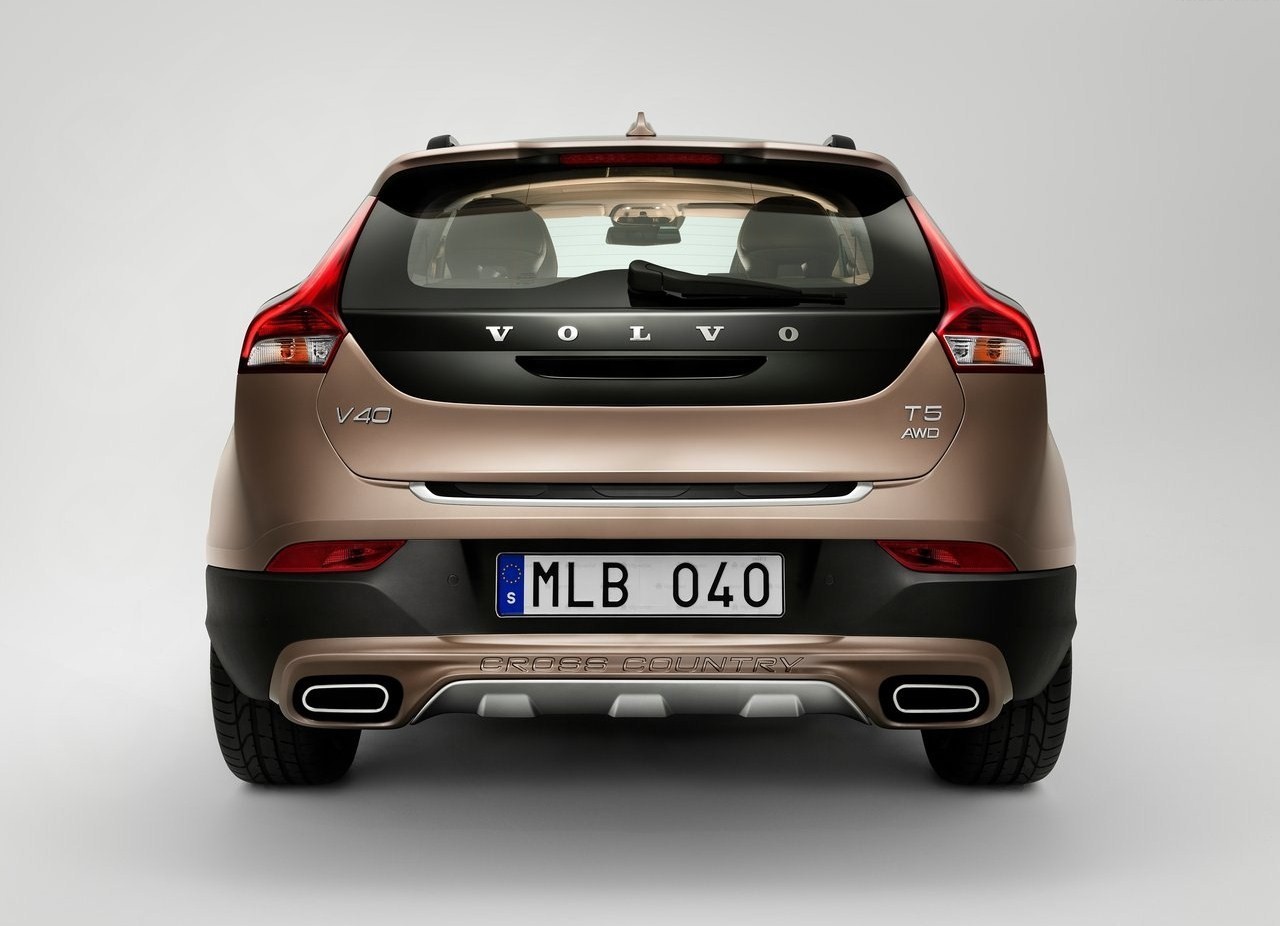
- Responsive 2.0-litre D4 turbo-diesel engine
- Powerful 2.5-litre T5 turbo petrol engine
- Competent dynamics
- Shares impressive Euro NCAP test results with 2013 Volvo V40
- Steering is accurate…
- … but overly assisted and lacks feel
- Suspension lacks compliance
- Large turning circle
- Cramped rear seats and limited cargo space
Overview
Released in August 2013, the Volvo V40 Cross Country was a five-door hatchback. Manufactured in Ghent, Belgium, the V40 Cross Country range consisted of front-wheel drive D4 and all-wheel drive T5 variants.
Engines: D5204T4 (D4), B5254T12 (T5) and D4204T14 (D4 ‘Drive-E’)
Of the engines,
- Initially, D4 variants were powered by the 2.0-litre D5204T4 five-cylinder turbo-diesel engine which had an aluminium cylinder block and head, a variable geometry turbocharger, common-rail direct injection, double overhead camshafts, four valves per cylinder and a compression ratio of 16.5:1;
- From October 2014, D4 variants were powered by Volvo’s 2.0-litre twin-turbo D4204T14 ‘Drive-E’ diesel engine. Rather than use common-rail injection with a conventional single pressure sensor, each injector in the ‘Drive-E’ diesel engine had a chip which monitored injection pressure – up to 2500 bar – for more precise fuel flow (Volvo’s ‘Intelligent Accuracy Refinement Technology’ or ‘i-ART’); and,
- For T5 variants, the 2.5-litre B5254T12 turbocharged petrol engine had an aluminium cylinder block and head, conventional port injection, double overhead camshafts, four valves per cylinder, variable valve timing and a compression ratio of 9.5:1.
All engines were mated to automatic transmissions and had ‘Start-Stop’ capability which enabled them to shut down when the vehicle was stationary to reduce fuel consumption. Regenerative braking – which controlled alternator output to charge the battery when the vehicle was braking or coasting – was also standard.
| Variant | Engine | Trans. | Years | Peak power | Peak torque |
|---|---|---|---|---|---|
| D4 (FWD) |
1984 cc D5204T4 turbo-diesel I5 | 6sp auto | 2013-14 | 130 kW at 3500 rpm | 400 Nm at 1750-2750 rpm |
| 1969 cc D4204T14 twin turbo diesel I4 | 8sp auto | 2014-18 | 140 kW at 4250 rpm | 400 Nm at 1750-2750 rpm | |
| T5 AWD | 2497 cc B5254T12 turbo petrol I5 | 6sp auto | 2013-14 | 187 kW at 5400 rpm | 360 Nm at 1800-4200 rpm (400 Nm with overboost) |
| 1969 cc B4204T11 turbo petrol I4 | 8sp auto | 2014-18 | 180 kW at 5500 rpm | 350 Nm at 1500-4800 rpm |
All-wheel drive system
The V40 Cross Country T5 had a Haldex all-wheel drive system which used a limited slip coupling. In normal conditions, the system provided a 90:10 front:rear torque split. If a loss of traction was anticipated, the ‘Instant Traction’ function enabled a feeder pump to pre-tension the clutch and direct up to 50 per cent of the engine’s torque to the rear wheels – in response to inputs from motion and yaw sensors – before wheel slip occurred.
Dimensions
Compared to the Volvo V40 on which it was based, the V40 Cross Country had the same length (at 4370 mm), width (1783 mm) and wheelbase length (2647 mm), but was 38 mm taller (1458 mm) and had a higher driving position. Visually, the V40 Cross Country could be identified by its larger alloy wheels, unique front mask with a dark, contrasting bumper, honeycomb mesh grille and upright daytime running lights, side sills and contrasting rear bumper with an integrated skid plate.
Suspension and steering
Like the V40, the Volvo V40 Cross Country had MacPherson strut front suspension, multi-link independent rear suspension and an electric power steering system.
Safety equipment
Standard safety equipment for the V40 Cross Country included dual front airbags, a driver’s knee airbag, front side airbags, full-length curtain airbags, ABS, electronic brake force distribution, brake assist, electronic stability control, traction control and front and outer rear seatbelts with pretensioners and load limiters. Furthermore, the V40 Cross Country was fitted with a pedestrian airbag which – in the event of a collision – inflated from under the rear edge of the bonnet to better protect pedestrians from hard points at the base of the windscreen and the lower A-pillars.
The V40 Cross Country was also fitted with Volvo’s ‘City Safety’ system (as standard). The City Safety System used lasers to detect vehicles ahead and provided autonomous braking – to prevent or minimise the severity of a collision – from speeds of up to 50 km/h.
Optional (i.e. extra-cost) driver-assisting safety technologies consisted of
- Adaptive cruise control: cruise control which could maintain a pre-set distance to the vehicle ahead;
Pedestrian Detection with Full Auto Brake: pedestrians could be detected via a radar sensor in the grille and a camera in front of the interior rear-view mirror. If a collision was anticipated, the driver would receive an audible warning and a flashing light would appear in the windscreen’s head-up display. If the driver did not react and a collision was imminent, full braking force would be applied automatically; - Road Sign Information: automatically detected road sign information and provided this information in the instrument display;
- Lane Keeping Aid: used a forward-looking camera to monitor lane markings when driving at speeds between 65 km/h and 200 km/h. If the driver unintentionally drifted out of their lane, the system would provide gentle steering wheel torque to steer the vehicle back onto its intended course. If the vehicle departed from the lane, a warning would be issued via a haptic vibration in the steering wheel;
- Active High Beam Control: automatically switched the headlights from high beams to dipped beams when oncoming traffic is detected;
- Enhanced Blind Spot Information System (BLIS): in addition to conventional blind spot monitoring, a radar would monitor and alert the driver to rapidly approaching vehicles up to 70 metres behind the vehicle;
- Cross Traffic Alert: rear radar sensors would alert the driver to crossing traffic – up to 30 metres from the sides of the vehicle – when reversing out of a parking space; and,
- Driver Alert System: would monitor driver behaviour for signs of fatigue and provide warnings.
Euro NCAP testing
In Euro NCAP testing , the Volvo V40 received the highest overall safety result in the history of Euro NCAP testing, including the highest adult occupant protection score (98 per cent). The V40 also attained a 75 per cent child occupant protection rating, an 88 per cent pedestrian protection rating and a 100 per cent safety assist rating. In ANCAP’s assessment , this testing resulted in a five star adult occupant protection rating with a score of 36.67 out of 37.
Features: Volvo V40 Cross Country
Standard features for the V40 Cross Country included 18-inch matte black alloy wheels, an eight speaker sound system with a CD/DVD player, auxiliary inputs (3.5 mm/USB/iPod) and Bluetooth audio streaming, a Volvo Navigation System with a seven-inch colour display and voice control, power adjustable front seats, leather upholstery, climate control air conditioning, cruise control, daytime LED running lights, directional headlights with washers, rear parking sensors, a reversing camera, automatic headlights, rain-sensing wipers, Bluetooth mobile phone connectivity, 60/40 split and folding rear seats, a leather-wrapped steering wheel, remote central locking, power windows, power adjustable and heated mirrors with retracting function, a height and reach adjustable steering wheel, driver’s seat memory settings, ambient lighting, a cooled glovebox, 12 volt power outlet, roof rails, trip computer and an immobiliser.
The V40 Cross Country was also available with an optional ‘Park Assist Pilot’ which could steer the vehicle into parallel parks while the driver controlled the gearbox and vehicle’s speed.
Brochures
- Brochure: Volvo V40 Cross Country (August 2013)
- Brochure: Volvo V40 Cross Country (October 2014)
- Brochure: Volvo V40 Cross Country (October 2015)
Specifications
- Technical Specifications: Volvo V40 Cross Country (August 2013)
- Technical Specifications: Volvo V40 Cross Country (January 2016)
Related links
- Volvo Newsroom: Volvo launches the V40 Cross Country (September 2012)
- Volvo Newsroom: Volvo V40 Cross Country- model year 2014 (May 2013)
- Volvo Australia: Volvo V40 Cross Country
- Wikipedia.org: Volvo V40 Cross Country
